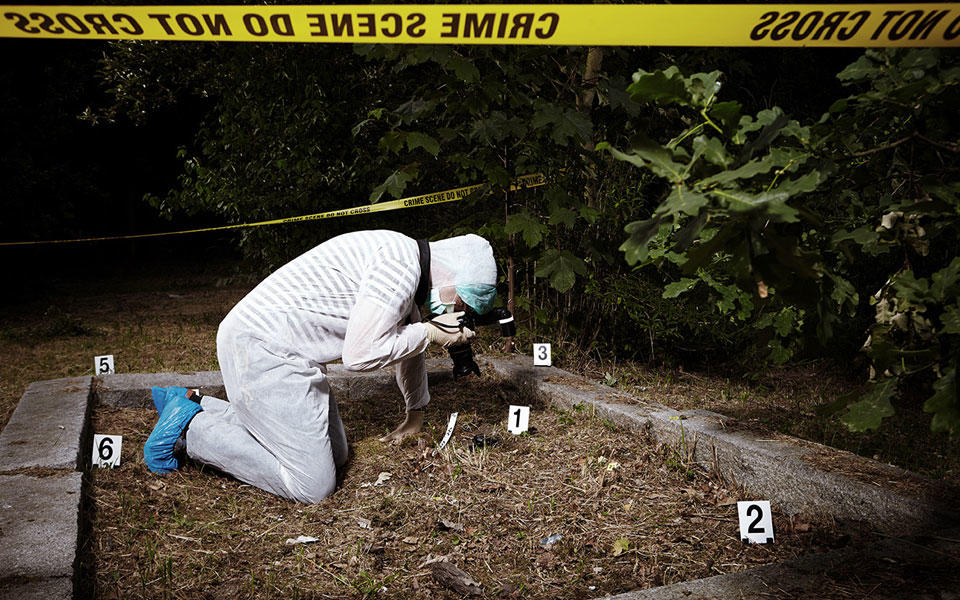Taking Measure
Just a Standard Blog

On TV crime shows, forensic evidence is collected, analyzed, the suspect positively identified, arrested, convicted, and imprisoned—all in under an hour. There are (usually) no mistakes in the collection or analysis (unless that would make for a better story), and when the forensics expert is called to the stand, they are absolutely certain of their conclusions. “It couldn’t have been anyone else, counselor,” the expert says. “It’s a slam dunk.”
Unfortunately, real life is a whole lot messier and much less certain. Forensic evidence can be a powerful and compelling tool, but like everything else, it’s not infallible. This is largely because people are fallible, and science is never 100 percent certain of anything.
We have to be able to quantify our confidence.
NIST has an interesting role in forensic science. We don’t do cases. We don’t testify for the prosecution or the defense. Not having a stake in the outcome of a case gives us the opportunity to do work that benefits the entire justice system. To me, the biggest role that NIST can play is as a neutral party. Our job is to defend and improve the data. Our research helps to separate fact from fiction and determine the limits of what forensic science can tell us. But I’ve been asking myself lately, “How do we build an engine that will propel forensic science into the future?”
Science changes our understanding of the world, and change makes some people uneasy. The justice system is based on precedent, on what was decided before. There are some who would like for there to be no technological advances, at least no advances that overturn convictions or make them harder to get. But scientists are always looking to learn new things and it’s not uncommon for us to learn that our previous assumptions were wrong. In forensic science, proving old assumptions wrong has the potential to affect thousands of cases and cost millions of dollars. For example, there are thousands of cases involving hair comparisons going back to the 1980s now being reviewed by the FBI crime laboratory because recent research has brought that method of identification and the description of its results into question.
This is the kind of problem that we are aiming to correct and prevent from happening. This week, we’re celebrating the third anniversary of a partnership with the Department of Justice to create the National Commission on Forensic Science and the Organization for Scientific Area Committees, or OSAC.
Our goal is to build a framework that will support improvements in forensic science and carry it forward as technology changes. The OSAC develops standards and guidelines, and the commission advises the U.S. Attorney General on matters of policy that can improve forensic science. The research conducted at NIST and elsewhere will help to develop new tools and methods for forensic science, as well as standards detailing the best way to apply those tools and methods
What’s fun about being involved on this level is that I get a chance to put my research experience into practice and figure out how to expand the scope of that research. But I know that simply improving forensic science is not the final solution to a better criminal justice system. The science is just one cog in the gears that drive the justice system.
While our job is to improve the science, we can also call attention to other areas, like communication, that could further help improve the system. For example, the way things are now, two different forensics labs might look at the same evidence, but describe that evidence in completely different terms. They may even come to different conclusions. That’s why we’re looking at developing a consistent terminology for forensic science so that scientists, law enforcement, and the courts can communicate clearly.
The commission has requested that the Bureau of Justice Statistics conduct a survey to determine just how many law enforcement forensic units are operating in the United States. We know that there are 400 accredited forensic labs—accredited means that an outside body has determined those labs meet certain standards and follow certain protocols—but there are also forensic units within police departments that do fingerprinting and ballistics work. These units are not typically accredited. There are approximately 18,000 police departments in the U.S. Once we know how many police departments are conducting forensic examinations, we’ll need to develop standards for them and set up a means for accrediting them.
With accreditation, practitioners will be able to say in court that they are held to a standard, increasing confidence in their testimony. That will lead to greater confidence in forensic science in general and how it’s implemented and used. I’m looking forward to working with the commission to identify additional areas where NIST can contribute. I enjoy making connections that people wouldn’t see otherwise, bridging the gap between science and law, and helping lawyers understand and appreciate the science and scientists understand how data they generate can benefit the law. We want the best science for the prosecution and the defense. I believe this work we are doing will keep forensic science moving toward our goal—for all forensic evidence to support the equal and impartial application of justice.
About the author
Related Posts
Comments
- Reply





